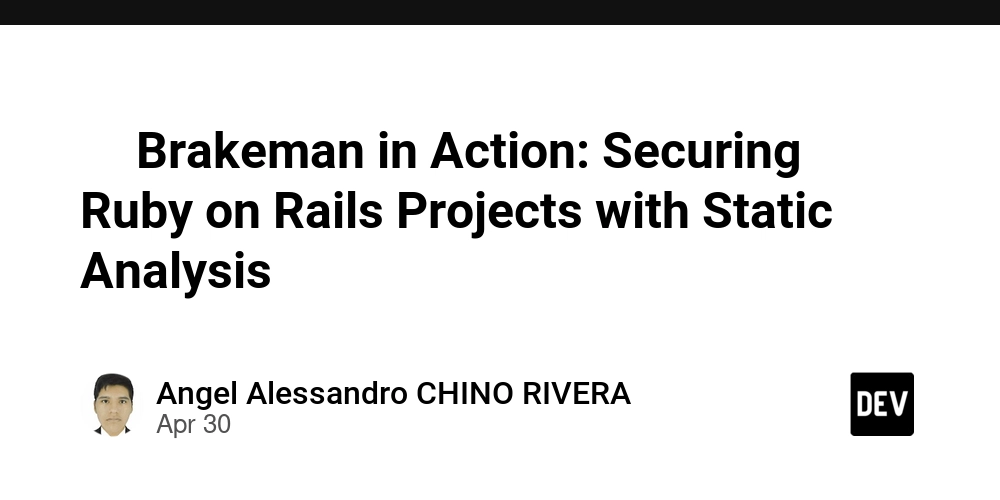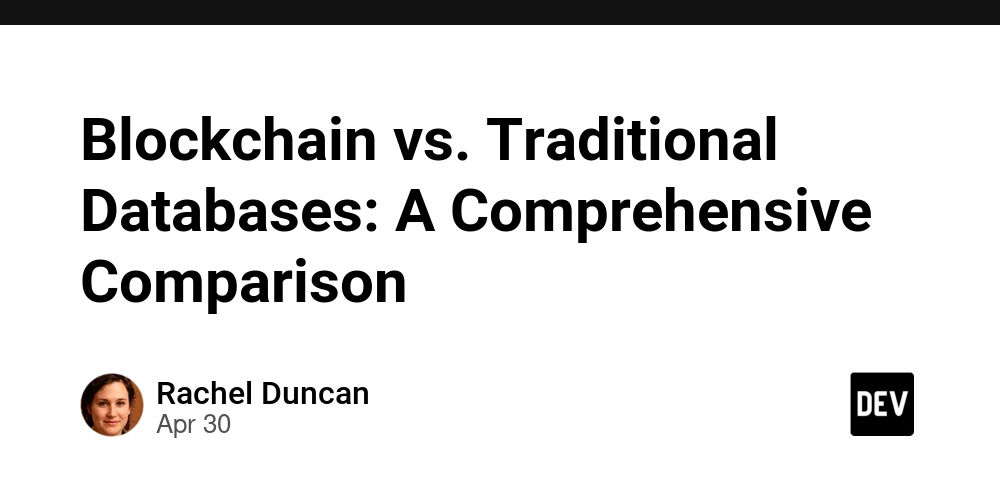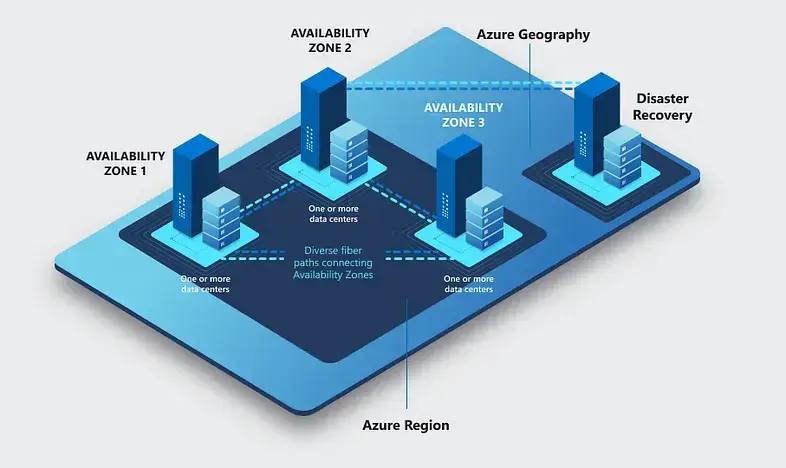As modern web applications grow in complexity, the need for automated security auditing tools becomes more pressing. For developers working with Ruby on Rails, Brakeman offers an efficient, focused, and open-source Static Application Security Testing (SAST) solution to identify vulnerabilities at the source code level — before they reach production. What is Brakeman? Brakeman is a dedicated static analysis tool built specifically for Ruby on Rails applications. Unlike general-purpose SAST tools that support many languages, Brakeman is laser-focused on Rails conventions and syntax, allowing it to offer deeper insights with fewer false positives in this ecosystem. Why Brakeman? Fast Setup: No need to run the app or set up a full development environment. Tailored Rules: Custom-crafted rules for Rails security risks. Continuous Integration Friendly: Easily integrates into CI pipelines like GitHub Actions, GitLab CI, or Jenkins. Developer-Friendly Output: Provides readable and actionable reports. Getting Started Applying Brakeman to your Rails project is straightforward: Install Brakeman You can install it as a gem: gem install brakeman Or include it in your Gemfile: group :development do gem 'brakeman', require: false end Run a Scan Navigate to the root of your Rails application and run: brakeman Brakeman will automatically detect the Rails version and begin analyzing models, controllers, and views. Review the Report By default, Brakeman outputs a plain-text summary. You can also export the report as JSON, HTML, or even a tab-separated values file: brakeman -f html -o brakeman_report.html What Can It Detect? Brakeman is effective at spotting common Rails-specific vulnerabilities, such as: Mass assignment (attr_accessible misuse) Cross-site scripting (XSS) in views SQL injection in queries Unsafe redirect usage Command injection Insecure use of send, eval, or system Integration into Development Workflow To maximize its value, Brakeman should be integrated into your CI pipeline. Here’s an example GitHub Actions step: - name: Run Brakeman - run: | - gem install brakeman - brakeman -f json -o brakeman.json You can also fail the build automatically if high-severity issues are found, ensuring security gates are enforced continuously. Limitations While Brakeman is highly effective for Ruby on Rails projects, it does not support other languages or frameworks. Also, as a static tool, it may not detect runtime issues or vulnerabilities in third-party services. However, within its scope, Brakeman is precise and lightweight, making it a go-to tool for Rails developers. Final Thoughts Security should not be an afterthought, and tools like Brakeman empower developers to take control of their code quality from the very beginning. Its simplicity, specificity, and strong community support make it a must-have for anyone serious about securing Rails applications. By adopting Brakeman early in your development cycle, you can catch critical vulnerabilities before they escalate, reducing both risk and cost.

As modern web applications grow in complexity, the need for automated security auditing tools becomes more pressing. For developers working with Ruby on Rails, Brakeman offers an efficient, focused, and open-source Static Application Security Testing (SAST) solution to identify vulnerabilities at the source code level — before they reach production.
What is Brakeman?
Brakeman is a dedicated static analysis tool built specifically for Ruby on Rails applications. Unlike general-purpose SAST tools that support many languages, Brakeman is laser-focused on Rails conventions and syntax, allowing it to offer deeper insights with fewer false positives in this ecosystem.
Why Brakeman?
- Fast Setup: No need to run the app or set up a full development environment.
- Tailored Rules: Custom-crafted rules for Rails security risks.
- Continuous Integration Friendly: Easily integrates into CI pipelines like GitHub Actions, GitLab CI, or Jenkins.
- Developer-Friendly Output: Provides readable and actionable reports.
Getting Started
Applying Brakeman to your Rails project is straightforward:
- Install Brakeman You can install it as a gem:
gem install brakeman
Or include it in your Gemfile:
group :development do
gem 'brakeman', require: false
end
- Run a Scan Navigate to the root of your Rails application and run:
brakeman
Brakeman will automatically detect the Rails version and begin analyzing models, controllers, and views.
- Review the Report By default, Brakeman outputs a plain-text summary. You can also export the report as JSON, HTML, or even a tab-separated values file:
brakeman -f html -o brakeman_report.html
What Can It Detect?
Brakeman is effective at spotting common Rails-specific vulnerabilities, such as:
- Mass assignment (attr_accessible misuse)
- Cross-site scripting (XSS) in views
- SQL injection in queries
- Unsafe redirect usage
- Command injection
- Insecure use of send, eval, or system
Integration into Development Workflow
To maximize its value, Brakeman should be integrated into your CI pipeline. Here’s an example GitHub Actions step:
- name: Run Brakeman
- run: |
- gem install brakeman
- brakeman -f json -o brakeman.json
You can also fail the build automatically if high-severity issues are found, ensuring security gates are enforced continuously.
Limitations
While Brakeman is highly effective for Ruby on Rails projects, it does not support other languages or frameworks. Also, as a static tool, it may not detect runtime issues or vulnerabilities in third-party services. However, within its scope, Brakeman is precise and lightweight, making it a go-to tool for Rails developers.
Final Thoughts
Security should not be an afterthought, and tools like Brakeman empower developers to take control of their code quality from the very beginning. Its simplicity, specificity, and strong community support make it a must-have for anyone serious about securing Rails applications.
By adopting Brakeman early in your development cycle, you can catch critical vulnerabilities before they escalate, reducing both risk and cost.





























![[Free Webinar] Guide to Securing Your Entire Identity Lifecycle Against AI-Powered Threats](https://blogger.googleusercontent.com/img/b/R29vZ2xl/AVvXsEjqbZf4bsDp6ei3fmQ8swm7GB5XoRrhZSFE7ZNhRLFO49KlmdgpIDCZWMSv7rydpEShIrNb9crnH5p6mFZbURzO5HC9I4RlzJazBBw5aHOTmI38sqiZIWPldRqut4bTgegipjOk5VgktVOwCKF_ncLeBX-pMTO_GMVMfbzZbf8eAj21V04y_NiOaSApGkM/s1600/webinar-play.jpg?#)








































































































































![[The AI Show Episode 145]: OpenAI Releases o3 and o4-mini, AI Is Causing “Quiet Layoffs,” Executive Order on Youth AI Education & GPT-4o’s Controversial Update](https://www.marketingaiinstitute.com/hubfs/ep%20145%20cover.png)


































































































































































































































































































































































-xl.jpg)






























![New Hands-On iPhone 17 Dummy Video Shows Off Ultra-Thin Air Model, Updated Pro Designs [Video]](https://www.iclarified.com/images/news/97171/97171/97171-640.jpg)
![Apple Shares Trailer for First Immersive Feature Film 'Bono: Stories of Surrender' [Video]](https://www.iclarified.com/images/news/97168/97168/97168-640.jpg)




































































































